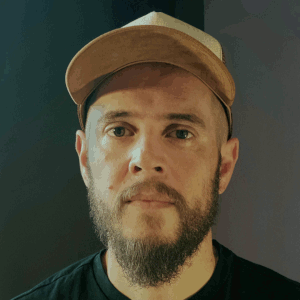Some days ago I got a copy of Animating With Blender - How to Create Short Animations from Start to Finish on my mailbox, and I have just finished reading it.
It was written by Roland Hess (also known as harkyman) while he produced his recently released and Suzanne Awards nominated short The Beast. I've never written a book, but I believe it is at least as hard as making a short animation, and this guy managed to make them both at the same time. This alone already made him deserve my kudos even before I started reading.

Now that I've finished this reading, I'm very happy to say that this book is a clear sign of evolution of the Blender Community. Until its release we already had some great books, but all of them had the same purpose: teach how to use Blender or how to achieve an specific task. That is great - and still necessary - but this new book goes a step further: now that you already know how to use Blender, how about being productive and making something cool with it?
As I said, the biggest source from where he gathered the information to write this book was his own short production. The author stated that he knows about some shortcomings in the movie, and I really recommend you to read his book without being too picky on the movie itself, since he put on those pages the result of what he learned during that production.
Believe me, there are lots of things we learn when producing a short and having that information written, on your hands to make you avoid some common mistakes is great for you, aspiring to be the next Brad Bird. :)
One of the first ideas you'll find on the book is that it will help you avoid your movies' "death" by natural causes. This kind of death for short movies is actually very common, and it happens for a number of reasons he points out while suggesting some possible solutions.
This book aims to cover most production aspects of your new award winning short, with a very easy language and bits of humor on it. From your first idea to the final release, there are some great tips on common mistakes and ways to avoid those "natural causes".
The book comes with a DVD with the movie, all the production files and examples, HD versions of Big Buck Bunny and Elephants Dream, and some softwares like Blender (O RLY? heh), Audacity, a renderfarm manager and the VLC video player for anyone who may face trouble playing the movies.
It was also a nice idea to add at the end of each chapter the Peach Perspective on the subject. There are some questions answered by the Peach team, talking about their experience in all aspects of their production.
I wrote down some topics I found interesting while reading the book:
- Tips for story creation, maintaining it interesting and not over complicating things;
- Some clever ways to organize and naming your files and assets (believe me, that's important);
- Important and often overlooked tips like setting up the correct aspect ratio for your renders;
- An interesting way to test your maximum working polygon count, to avoid future headaches;
- How to prepare your meshes and let'em ready for animation;
- How to work with libraries and linked assets - an often overlooked feature that is extremely important to animation workflows;
- Good habits when working with Blender;
- Tips for audio recording;
- Rigging and skinning even with info on the recently added Mesh Deform modifier;
- Creating facial controls and eyes rigging;
- Useful tips on working within the Action Editor, like grouping and some overlooked and rather obscure features;
- Tips on specific tasks, like making your character hold something or making a simple walk;
- Very cool tips for decreasing render times while still maintaining good quality renders;
- Ways to light your scene in a good way, from exterior to interior scenes;
- The good use of simulations (fluid, cloth, hair...), their drawbacks and workarounds;
- How you can handle the final composition, rendering your frames and even setting up a renderfarm;
- Good info on putting it all together in your masterpiece, making sure it will work on all kinds of media: from the web to DVDs;
- There are tips even on asking help in the forums. :)
I really think this is a great book, with some valuable information that will sure help you taking your idea to the final production in a sane way. Aimed for who is already somewhat comfortable with Blender, this book is a must have during all of your production stages as a good reference on how to (and - important - how NOT to) do things.
It is good to see that our Community is getting this kind of publication, going a bit further than just using the tool to how to make some interesting with it. It is a great addition to our Blender bookshelf. :)
What else can I say? Well... go for it! ;)






